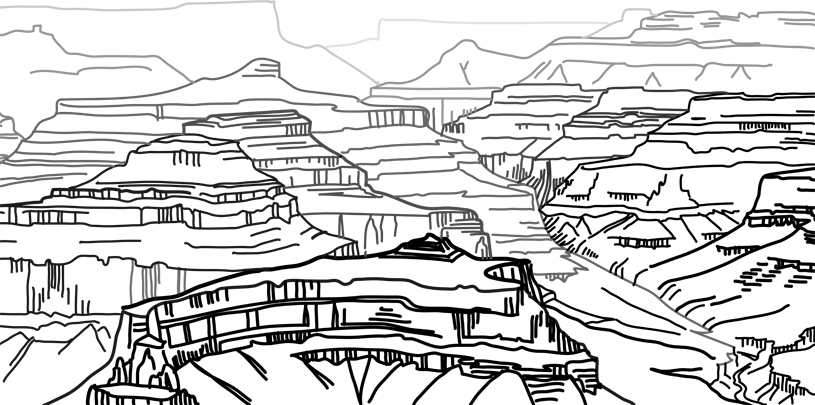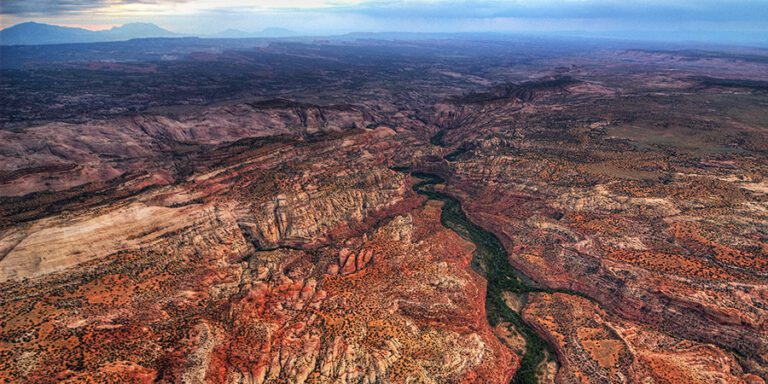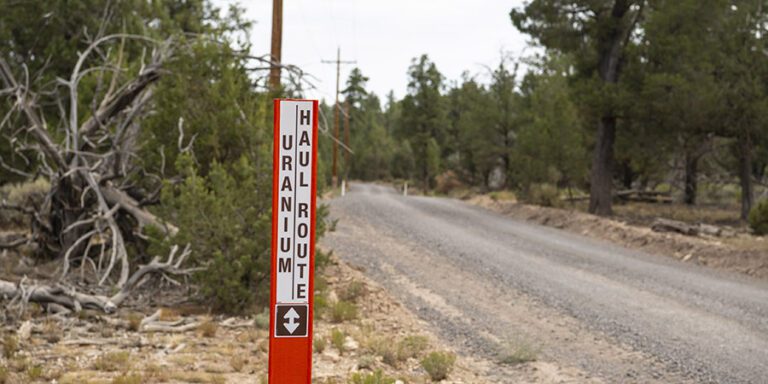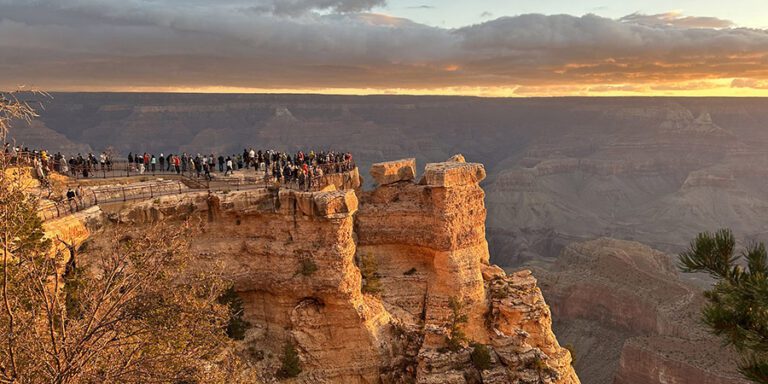
It’s time to ban mining around the Grand Canyon. Here’s why.
The red, orange, and purple layers of fractured rock stacked up more than a vertical mile from the Colorado River to the rims of the Grand Canyon hold many secrets. The oldest footprints ever discovered in the Grand Canyon were only spotted recently, after a boulder fell off a cliff near Bright Angel Trail. Though harder to see, groundwater flow in the Grand Canyon region is another mystery still concealed behind the canyon’s walls.
If you pour a gallon of water out onto the ground on the rim, it’s hard for scientists to know exactly how far (and how fast) that water will travel, and where it will end up. Around the canyon, layers of rocks that appear impermeable may in fact hide cracks and crevices that allow water to drip, trickle, or gush through.
So if water, say, at a uranium mine, is found to be contaminated — as it has been at the Canyon Mine and other mines near the national park — that contamination could very well travel to the seeps and springs that support life — from hanging gardens to bighorn sheep and mountain lions to hikers — inside the Grand Canyon. In Havasu Canyon, members of the Havasupai Tribe, whose ancestors have lived in the canyon since time immemorial, worry that uranium mining on the rims could contaminate their sole source of drinking water.
Here’s everything you need to know in two minutes:
Water problems at Canyon Mine
Since miners punctured a shallow aquifer at Canyon uranium mine on national forest land near Grand Canyon National Park, over 40 million gallons of floodwater with high levels of uranium and arsenic have been pumped out of the mine shaft.
Recent scientific research has concluded that water from shallow aquifers percolates into the deeper Redwall-Muav aquifer at unknown locations south of the Grand Canyon. The Redwall-Muav aquifer is the source of the largest springs in the Grand Canyon.
Canyon Mine is currently exempt from a temporary ban on mining on public lands around the canyon, but its groundwater problems are a perfect example of why uranium mining is too risky for this region. The Grand Canyon region needs a permanent mining ban.
You can help to protect the Grand Canyon from mining
The good news is your elected officials and Arizona state regulators have the power to protect the Grand Canyon and its precious waters from the perils of uranium mining, forever. You can help by:
- Asking your representatives in Congress to ensure that the Grand Canyon Centennial Protection Act — a permanent mining ban for the region — becomes law; and
- Urging regulators at the Arizona Department of Environmental Quality (ADEQ) to close Canyon Mine because nobody can ensure groundwater protection. If the mine is to operate, it must be carefully regulated and monitored.
Specifically, you can tell ADEQ that:
- Canyon Mine’s aquifer protection permit must be more protective of groundwater.
- The mine should be closed, but if it remains open, its aquifer protection permit should require additional monitoring wells in both the shallow Coconino Aquifer and in the deeper Redwall-Muav Aquifer.
- The mine’s required insurance policy for cleanup (known as a “surety bond”) should be increased.
The case for better regulation and monitoring
A recent study by the United States Geological Survey in the area suggests that shallow groundwater could be mixing with deeper groundwater near the mine, despite what ADEQ has described as “over 1,000 feet of impermeable rock layers between the bottom of the mine shaft and the Redwall-Muav Aquifer.”
In reality, no one has investigated to determine whether fractures in the area could allow contaminated water to seep through the walls of the mine shaft and reach the Redwall-Muav Aquifer. When mine operators conducted a “permeability test,” they determined that water can seep into the rock and slowly migrate elsewhere.
Deep wells should be drilled around the mine to determine the direction of groundwater flow and to immediately detect contamination. ADEQ should also ensure that the mine’s surety bond amount reflects careful consideration of the cost of potential groundwater contamination cleanup and management, so that if water does become contaminated, the mining company doesn’t just declare bankruptcy and leave taxpayers holding the bag, as other companies have done in the past.
The Grand Canyon, its waters, and the people, animals, and plants that depend on them, deserve better protection from the perils of uranium mining. Please take action today.





